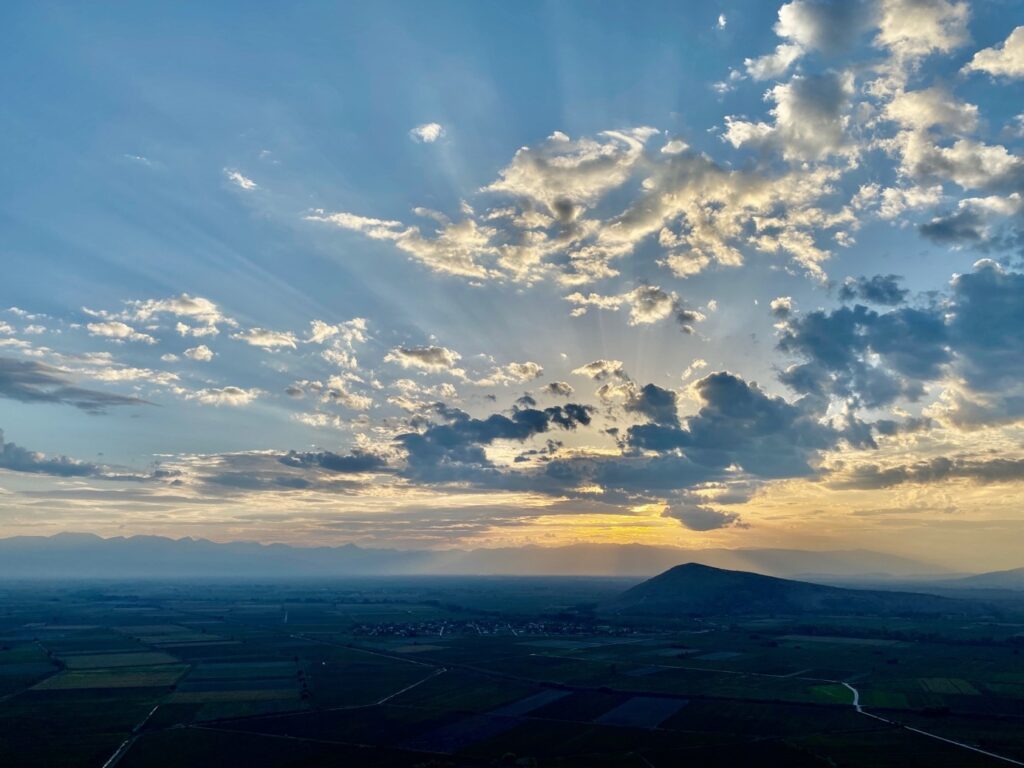Exploring Ancient Greek Urbanism in Western Thessaly
Every story has an ending.
In this blog, Robin Rönnlund, author of The Cities of the Plain encourages us to look beyond the Athenian Acropolis and explore the fascinating landscape of Western Thessaly, the place where agriculture and sedentary life first reached the European mainland. Work your way through each chapter in the tales of the ancient cities of this little-studied region, from the opening sentence to the final full stop.
By Robin Rönnlund, author of The Cities of the Plain | 3 min read
Originally posted on the Oxbow Books’ Blog
To publish a book constitutes the end of a long journey, and it is often easy to forget why and when one once set out to write it at all. Casting myself back in time to just before the pandemic, I think what originally prompted me to start researching for a monograph on cities in ancient Greece was the urge both to tell the story of how cities came to be, and to introduce readers to Western Thessaly. These are topics which have long captivated me, and by combining the two I hope that they will figure more in scholarly publications and in the public mind.
Cities—which to us today may appear eternal and self-given in nature—have their specific historical context.

It is easier to remember precisely when my interest in ancient Mediterranean urbanism began. It was in one particular afternoon in 2010 when I realized—having spent the whole day in the university library—that there was not one encyclopedia entry, not one monograph or article which discussed ancient Greek akropoleis from a more general perspective. An akropolis is a fortified hilltop found within or next to an ancient Greek city, and can be found at virtually every such site in Greece and beyond. However, no-one seemed to have considered this particular feature more broadly, with every single study instead focusing on the Athenian Acropolis. It fascinated me deeply that there was this apparent gap in our knowledge about such a well-known feature in the ancient urban landscape. This later prompted my PhD thesis on the function and symbolism of akropoleis to the ancient Greek cities, which in turn opened into my interest in ancient modes of settlement generally.
However, I don’t know what made me first aware of Western Thessaly; this little-studied region of inland Greece, often—and unjustly—seen as somewhat of a backwater to the coastal areas and their important sites. Maybe it was its vast plain, the surrounding mountain ranges, and that there seemed to be so many archaeological sites, yet so few publications. I remember scrolling from site to site using Google Earth, seeing large fortifications, the outlines of streets and buildings, all visible from space. The opportunities for fieldwork seemed endless. Thessaly has since become my main area of interest in Greece; its history and archaeology continue to fascinate me, as does its landscape.
Ancient Greek urbanism may not be as ancient as commonly thought.
In the end, my book combined these two strands of interest. Thessaly is the place where agriculture and sedentary life first reached the European mainland, with evidence of large settlements from the 8th millennium BCE until today. It thus provides one of the best opportunities to study and understand not only the development of cities in the ancient world but crucially also their end. The latter is surprisingly seldom addressed in research. Even if the very concept of a city in ruins implies that it must at some point have been abandoned, it appears as if scholars tend to overlook the events and processes that eventually led to people leaving their settlement.

The archaeology of the numerous Thessalian cities shows that ancient Greek urbanism may not be as ancient as commonly thought. Judging from excavation reports, cities in the region appeared only around 300 BCE, probably as part of conscious political strategies by the Macedonian kingdom, several centuries later than commonly assumed. In my reading, this occurred as a directed scheme by the Macedonians to improve the taxation potential of the area by concentrating a scattered population into more easily manageable settlement units. These cities were thus not the ‘organic’ outcome of growing villages, but essentially synthetic creations highly dependent on constant governmental investment. Consequently, when the Macedonian kingdom fell to the Romans in the early 2nd century BCE, subventions ended and the cities rapidly fell into oblivion.
The lesson to be learned from the case of Western Thessaly is that cities—which to us today may appear eternal and self-given in nature—have their specific historical context. They don’t exist as the end products of a linear development, but have their beginnings and ends. They cannot exist without political backing, and as states come and go, so will cities.
Further Reading
Want to uncover more about Robin’s excavations in Greece? Check out these two episodes of Time Team which feature his project below. And be sure to pick up your copy of The Cities of the Plain, available now through Casemate Academic!
Urbanism in Ancient Western Thessaly
$63.00
9781789259926
192 Pages



